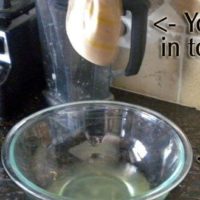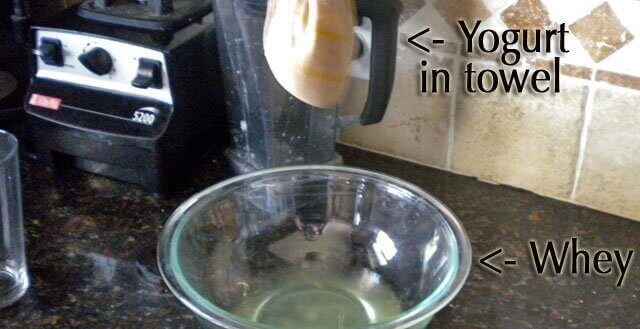I’ve talked a lot about fermented foods and drinks lately, from my favorite water kefir, to homemade sauerkraut. Lately, I’ve been enjoying trying things like fermented condiments, salsas, and more.
Most of these recipes use whey to speed the lacto-fermentation process and for a long time, I avoided these recipes because I simply didn’t have and didn’t know how to make whey.
A friend and lacto-fermenting veteran shared an easy way to make whey, and I couldn’t believe I hadn’t started doing this sooner! The best part is, you can make whey at home in any kitchen with ingredients available at any grocery store.

Whey and Cream Cheese Recipe
Servings
Ingredients
- 32 oz full fat organic plain yogurt
- cheesecloth or thin dish towel
Instructions
- Pour the desired amount of yogurt into a cheesecloth or thin towel.
- Pull the ends of the towel up and secure with string or a rubber band.
- Tie the towel with yogurt in it to a cabinet handle and position a medium size bowl underneath.
- Leave it alone overnight to drip. The dripping liquid is whey.
- In the morning, if the dripping has stopped, pour the whey in the bowl into a glass jar and store in the refrigerator for up to six months.
- The yogurt left in the towel is actually cream cheese now. Put it in its own container and use as you would store-bought cream cheese.
Nutrition
Notes
- Make sure the towel is thin, as it will absorb too much of the whey if it is a very absorbent towel.
- Use the whey for homemade salsas, sauerkraut, fermented veggies or pickles and more.
Have you made whey before? If so, what is your favorite recipe using it? Share below!


Leave a Reply